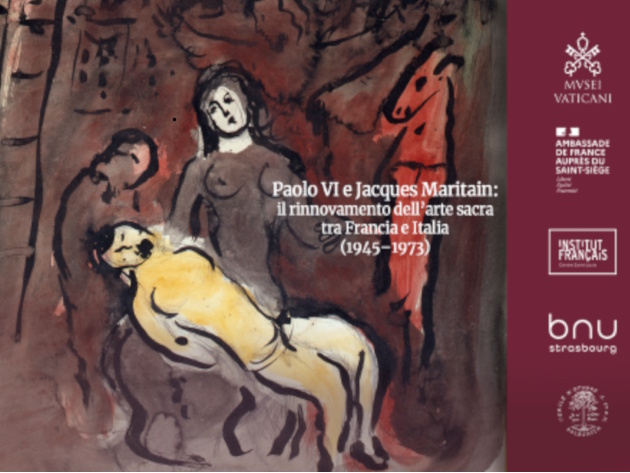
In the Jubilee Year, the Vatican Museums pay tribute to Jacques Maritain by retracing his thought, relationships and cultural legacy and recounting the deep friendship that bound the French philosopher to Pope Montini. Maritain had met the future Pope Paul VI in Paris as early as 1924, but their partnership grew stronger in 1945, when the philosopher was appointed by President Charles De Gaulle as French ambassador to the Holy See, a position he held until 1948.
The exhibition in the Salette della Torre Borgia invites visitors to rediscover the central role Maritain played in promoting dialogue between art and spirituality, between the world of culture and Catholicism in post-war Europe. Seven thematic sections follow the main stages of the philosopher’s aesthetic reflection, his influence on the Second Vatican Council and his fundamental contribution to the creation of the Vatican Museums’ Collection of Modern Religious Art, which Pope Paul VI inaugurated in June 1973.
Jacques Maritain and his wife Raïssa converted to Catholicism at the beginning of the century. In the years that followed, they created an international circle that brought together philosophers, clergymen, artists, poets and intellectuals from various backgrounds, such as Paul Claudel and Jean Cocteau. Some of the works donated to them by their artist friends ended up in the Vatican Museums’ Collection of Modern Religious Art, as gifts to Paul VI from the philosopher and the “Cercle des études Jacques et Raïssa Maritain”, along with other works donated by the artists themselves in support of this important project.
The paintings, drawings, prints, documents and books on display recount the aspirations of the many protagonists of this cultural and spiritual adventure and convey the intellectual and religious ferment of the era. Among the most significant artists are Gino Severini, with his works for Swiss churches promoted by Cardinal Charles Journet, Georges Rouault, Marc Chagall, a close friend of Raïssa, Henri Matisse, William Congdon and Alfred Manessier, all artists who explored the relationship between art and transcendence according to their own sensibilities.
Informations
ultimo ingresso ore 18.00Aperto ogni ultima domenica del mese (eccetto il 29 giugno Santi Pietro e Paolo) dalle 9.00 alle 14.00 (ultimo ingresso h. 12.30)Domenica e festivi chiuso
 Condividi
Condividi











































